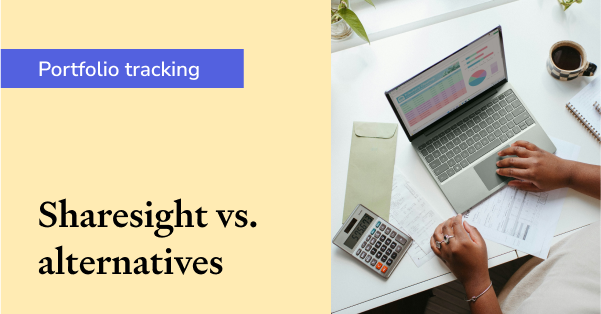Why invest in listed investment companies?
Disclaimer: This article is for informational purposes only and does not constitute a specific product recommendation, or taxation or financial advice and should not be relied upon as such. While we use reasonable endeavours to keep the information up-to-date, we make no representation that any information is accurate or up-to-date. If you choose to make use of the content in this article, you do so at your own risk. To the extent permitted by law, we do not assume any responsibility or liability arising from or connected with your use or reliance on the content on our site. Please check with your adviser or accountant to obtain the correct advice for your situation.
Listed investment companies (LICs) have been assisting investors to grow wealth and earn income for over 100 years. They provide investors with easy access to high quality professional fund managers who actively manage a pool of capital across a range of asset classes and investment strategies on their behalf.
One of the key benefits of the structure is that investors can receive a stream of fully franked dividends which are on average higher than the franked dividend yield of the Australian equity market, as well as capital growth over the medium-to-long term.

The structure of a listed investment company can bring a range of benefits to investors, including:
Closed end structure
LICs have a closed-end structure, which means there is a fixed pool of capital. This gives LICs the ability to invest for the long-term, as they are not subject to applications and redemptions like exchange traded funds (ETFs) or managed funds. This structure potentially enables LICs to outperform managed funds. The LIC investment manager chooses when to buy, hold or sell their investments, and unlike index tracking investments, they have the option to avoid being a forced buyer in over-valued markets or a seller in falling markets. The structure allows them to focus on holding long-term high-quality businesses that can generate capital growth and income for shareholders over time.
Consistent income stream
The company structure enables LICs to provide a stable stream of franked dividends to shareholders over time. This structure often allows LICs to retain profits and smooth dividend payments across good and bad years. This avoids the ‘feast or famine’ approach of an open-ended trust or ETF, where all income received must be paid each year and if nothing is received, nothing is paid, causing fluctuations in the income yield for investors which are generally only partially franked.
This proved to be the case during the Coronavirus pandemic, where many companies reduced or did not pay dividends, and most ETFs or open-ended trusts were unable to distribute income to their investors. However, many LICs were able to reward investors with stable and consistent franked dividend payments during this difficult time, with some increasing their dividend payments.
Franked income from a diverse range of asset classes
LICs can hold a pool of investments across asset classes that are beyond Australian shares, including global and international equities, infrastructure, small, mid and micro-cap stocks, as well as operating strategies that specifically focus on generating income and franking.
LICs holding asset classes that aren’t usually associated with paying franked dividends can do so because they are Australian companies, making profits and paying tax in Australia. Therefore, they can attach tax paid franking credits to investor dividends like other companies, such as Commonwealth Bank of Australia (ASX: CBA), BHP (ASX: BHP) and Woolworths Group (ASX: WOW).
Why do LICs trade at premiums or discounts to their net tangible assets (NTAs)?
An LIC can trade at a premium or discount to its underlying value, or its NTA. This is because an LIC is a closed-end fund with a fixed amount of capital, and investors can only buy its shares from an existing shareholder that is willing to sell. This means the LIC’s share price is determined by the forces of supply and demand. As a result, an LIC’s share price can deviate from the value of its NTA.
When an LIC’s share price trades at a premium to its NTA, it benefits investors who bought shares in the LIC when the company was trading at or below its NTA. When an LIC share price trades at a discount, this provides investors with an opportunity to gain exposure to the LIC’s underlying assets for less than its value.
Public companies provide stringent corporate governance and accountability of directors
Companies that are listed on the ASX, including LICs, have a board of directors. The role of the board is to set the strategic direction of the company, approve capital management initiatives and be responsible for the overall corporate governance of the company. They must act in the best interest of shareholders, which means making informed decisions and adequately preparing the company for any future changes. The board must also act in good faith with reasonable care, skill and diligence and keep abreast of the company’s activities and financial position.
Wilson Asset Management’s eight listed investment companies each offer unique exposure to an extensive range of companies in Australia, internationally and in the alternative assets space. In essence, by owning shares in a Wilson Asset Management LIC, you become a shareholder in a diversified investment portfolio that we manage on your behalf.
Find out more about WAM Income Maximiser, Wilson Asset Management’s new listed investment company (LIC). The company aims to provide investors with monthly income and capital growth, while taking less risk, by investing in high-quality equities and corporate debt — the first Australian LIC to do so. The Initial Public Offering (IPO) closes 11 th April 2025.
For more information, please take a few minutes to read Wilson Asset Management's Guide to Listed Investment Companies.

Sharesight vs. alternatives: Why investors choose our portfolio tracker
Compare Sharesight to alternative portfolio trackers and see why 500,000+ investors trust Sharesight for smarter portfolio management and tax reporting.

No rush to buy – Big Tech and banks hold the key
No rush to buy — big tech and banks hold the key. The VIX is rising quietly, signalling a shift in sentiment. Will this be a slow bounce or a longer downtrend?

Investopedia names Sharesight best portfolio tracker for DIY investors
We're proud to share that Investopedia has named Sharesight the Best Portfolio Tracker for DIY Investors in its 2025 review.